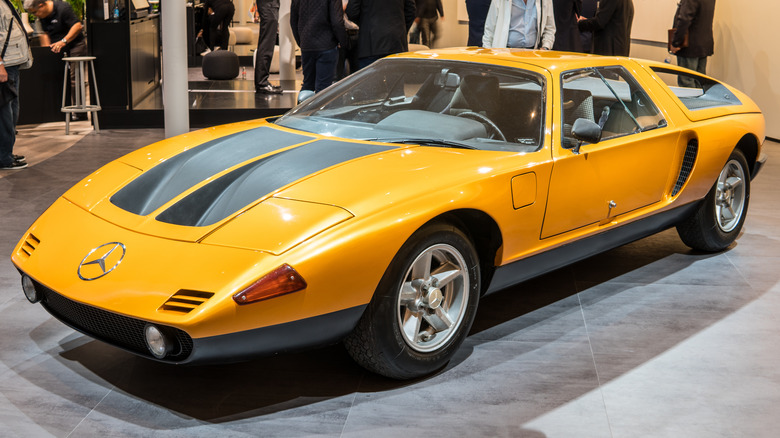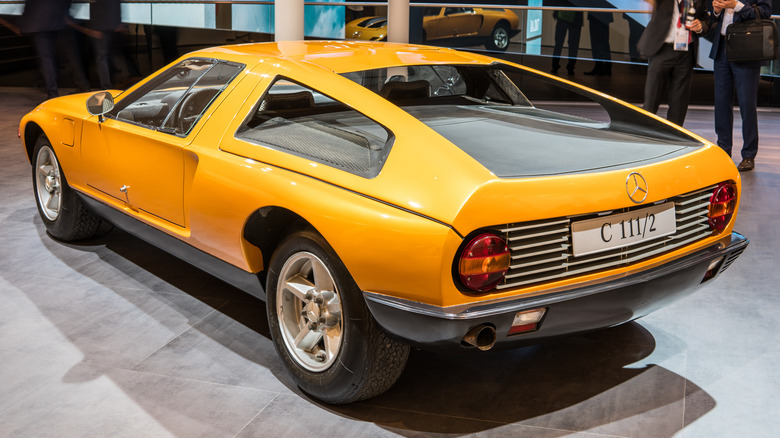The C111 Was The Most Incredible Mercedes Never Sold
Mercedes-Benz is known for its rather conservative high-performance, high-luxury cars, but from time to time, throughout its extensive history, it unleashes into the world some wild concepts. The car brand's most recent ambitious efforts are embodied in its all-electric line. Some of the company's new concepts are way ahead of their time, like the Vision AVTR, a groundbreaking vehicle. Mercedes actually built a prototype of the AVTR just to give its fanbase a real feel of the distant future. The car is powered by four individual motors allowing each wheel to drive separately. Among other things, the concept drives sideways, bio-connects with its driver, and presents itself as more of a living object than a vehicle.
Another new Mercedes-Benz concept hitting the right notes with exceptional specs is the Vision EQXX. The automaker claims the EQXX will have a massive 620-mile range when fully charged. The design combines luxury with a vision for EV performance. Mercedes adds that the EQXX pays homage to the "fine art of aerodynamics" and draws parallels between the new model and the iconic C111 of the 1970s. "To me, driving a car means total freedom," Bruno Sacco, legendary automotive designer, and creator of the C111 says. With top speeds of 186 miles per hour and a four-rotor Wankel engine, doing 0 to 60 mph in just 4.9 seconds, the C111 in its second edition, the C111-II, was freedom and then some.
Life and death of the iconic C111 sport car
Mercedes-Benz knew it was pushing the limits in design, interiors, and performance with the C111. To date, the company still refers to the car as an experimental vehicle. The C111 had an innovative reinforced fiberglass body mounted on a steel frame floor, a very unique material to use considering most cars in those years were made of steel or other metals. The fiberglass body gave the C111 the light weight it needed to perform. The model was revealed during the Frankfurt International Motor Show IAA in 1969, and it took everyone by surprise with its gullwing doors, 345-horsepower engine, and super-sports car presence. But, the C111 dream would not last long.
The automaker had to kill the dream of producing the C111 in series. A strict U.S. emissions policy, the gas shortage crisis which led to fuel-efficient cars, trends for safer cars, the unique bodyshell, the Wankel engine stressed to its max, and other issues played against the vehicle. As Motor Trend reports, a total of 16 C111s, in different versions, were built, including a C111-IV with a twin-turbo 4.8-liter V-8 that hit 251 miles per hour in 1979. The C111 is a ghost, a legend, a dream that never took over the streets. Still, on some occasions, fans can delight in rare sightings of the classic in action.

